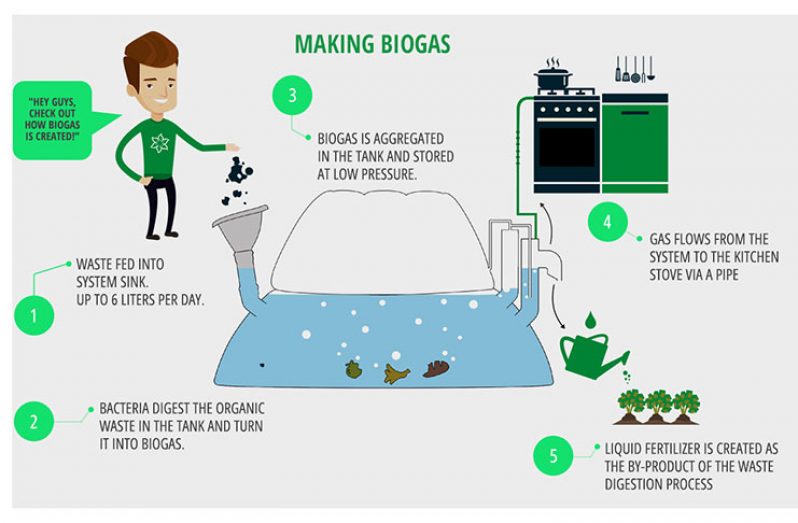BIOGAS can be used as an alternative energy source instead of firewood and fossil fuels since it is a gas produced by the breakdown or decomposition of organic waste in the absence of oxygen and comprises a mixture of gases, mainly carbon dioxide and methane.
According to the Guyana Energy Agency (GEA), there are many raw materials (organic materials) from which biogas can be extracted, for example, animal manure, leaves, twigs, grasses and garbage, among others.
Public Communications Officer, Taiwo Williams, said biogas production from animal waste provides a unique opportunity to mitigate the effects of waste produced on farms while providing a cheap and sustainable source of energy.
To facilitate the production of biogas, a structure referred to as a bio-digester unit (BDU) is used, she said. A bio-digester aids in the decomposition of organic materials, such as those listed above, to produce methane gas (biogas) that can be used for cooking, heating, lighting (using gas lamps), electricity generation, operation of farm machinery and other energy needs.
The GEO official noted that a bio-digester unit is a clean, healthy and an economic alternative since it not only provides fuel for domestic use but provides liquid and solid fertilisers that can be used in farming.
She said this in turn aids in reducing the amount of chemical contaminants (in organic fertiliser) that affects human health and the environment.
The GEA has been monitoring and supporting the installation of bio-digesters.
GEA encourages livestock farmers rearing cattle and pig to take advantage of this technology and cash in on potential savings.
The production of methane gas will help to conserve on imported energy sources (fossil fuels), thereby allowing for savings on energy bills and a positive contribution to the environment.
The cost to set up a bio-digester, including parts and labour, should be approximately $120,000 and would replace the need for at least one 20-lb LPG gas cylinder per month.
The simple payback for the installation based on an average cost $3,600 per 20-lb LPG gas, is just under three years; after year three, except for basic maintenance and labour, all gas produced will be free.
Scientific advances have significantly enhanced biogas yield production, leading to the development of commercial or large/medium scale biogas plants in recent years.
In terms of both consumption and production of biogas, Europe leads the other nations mainly due to increased government regulation for renewable energy initiatives.




.jpg)










